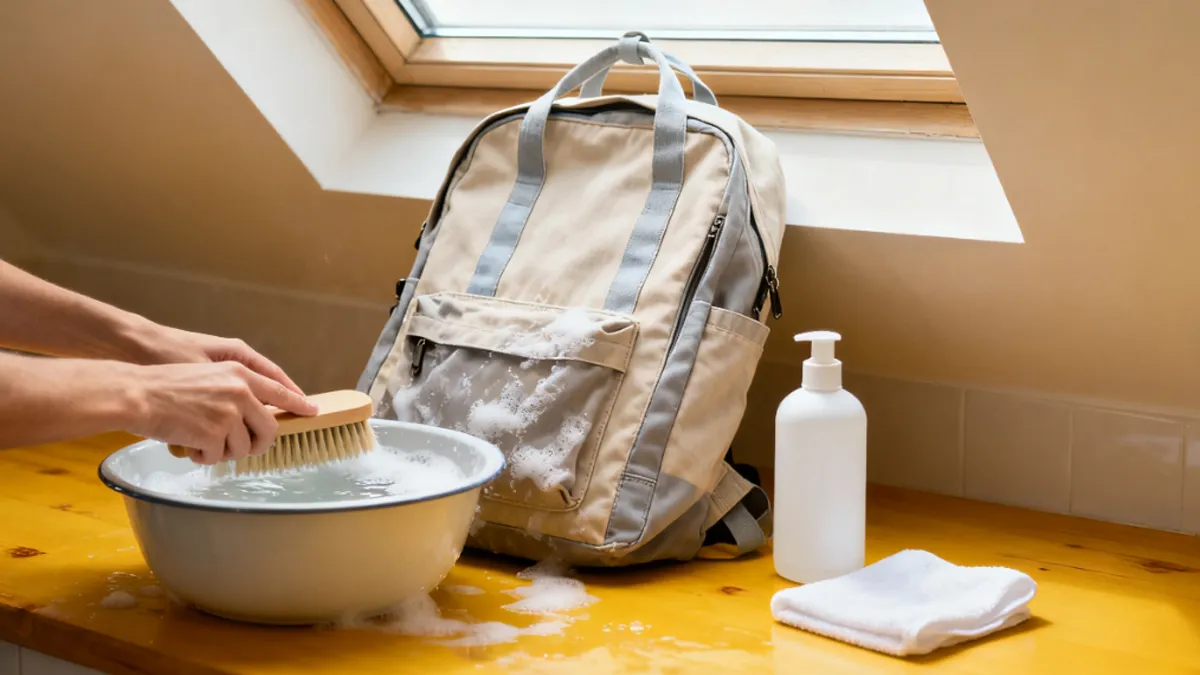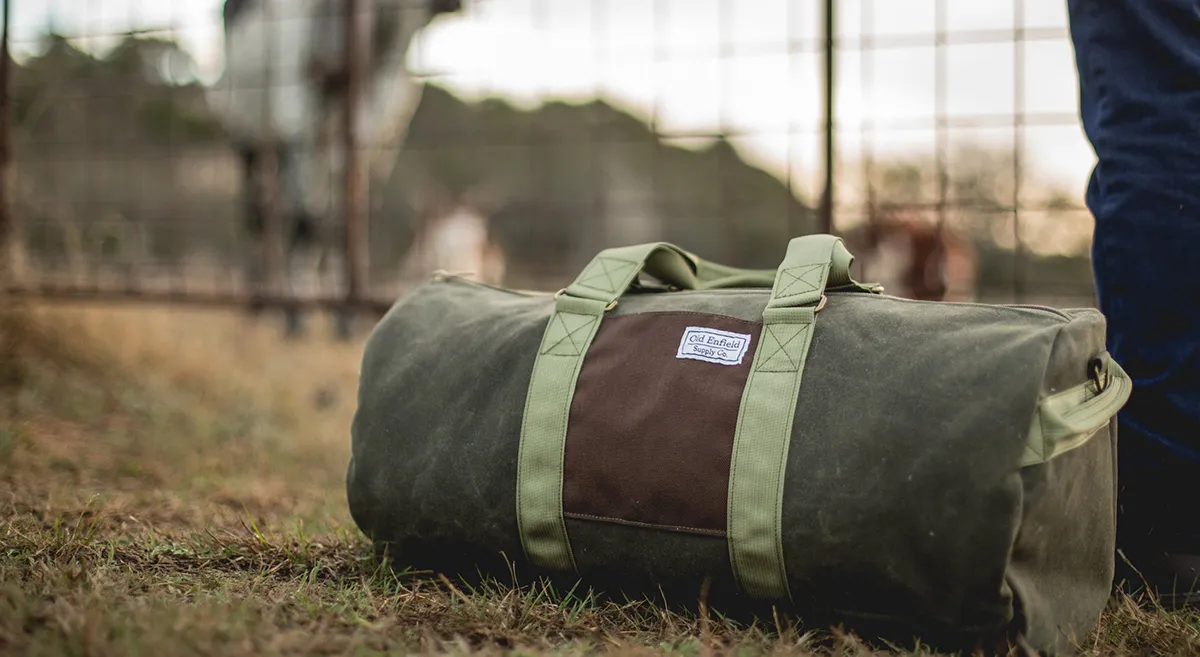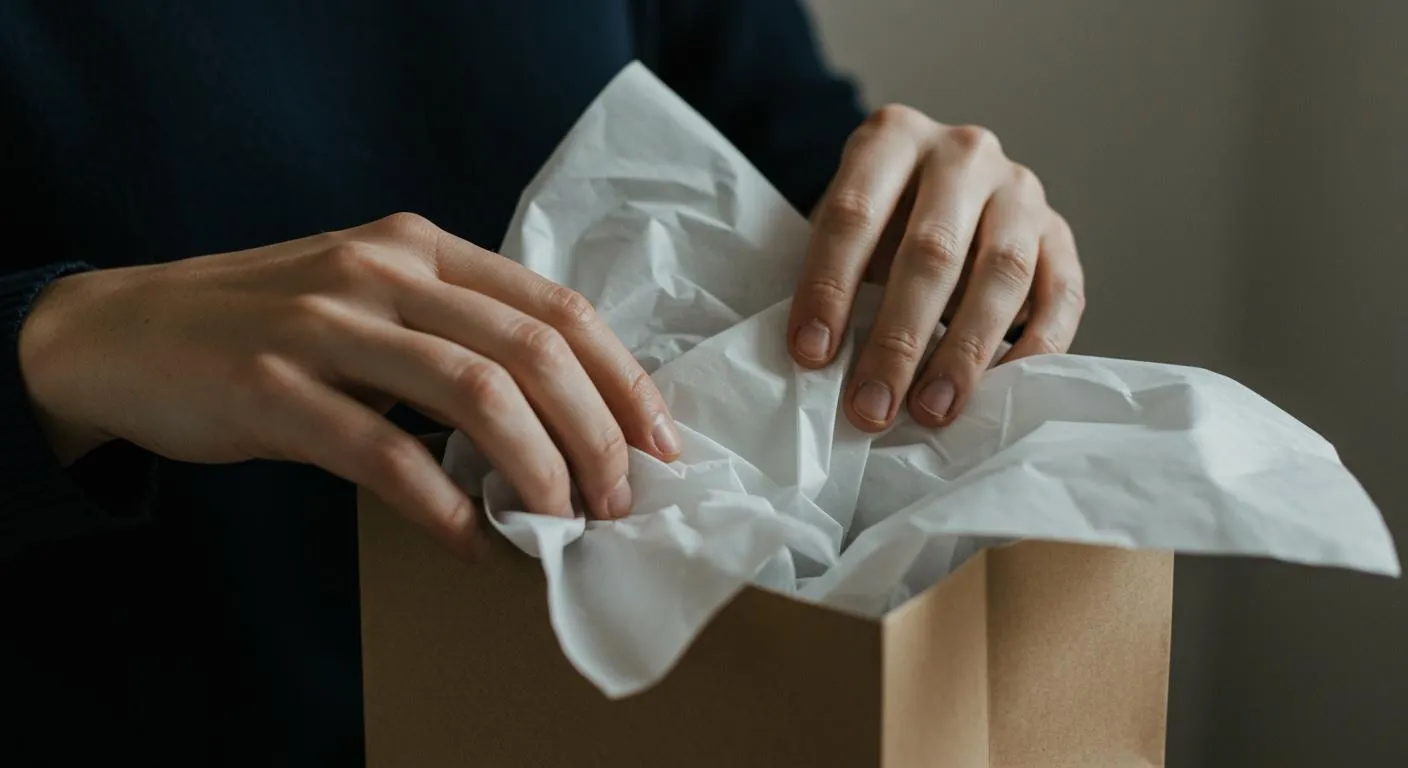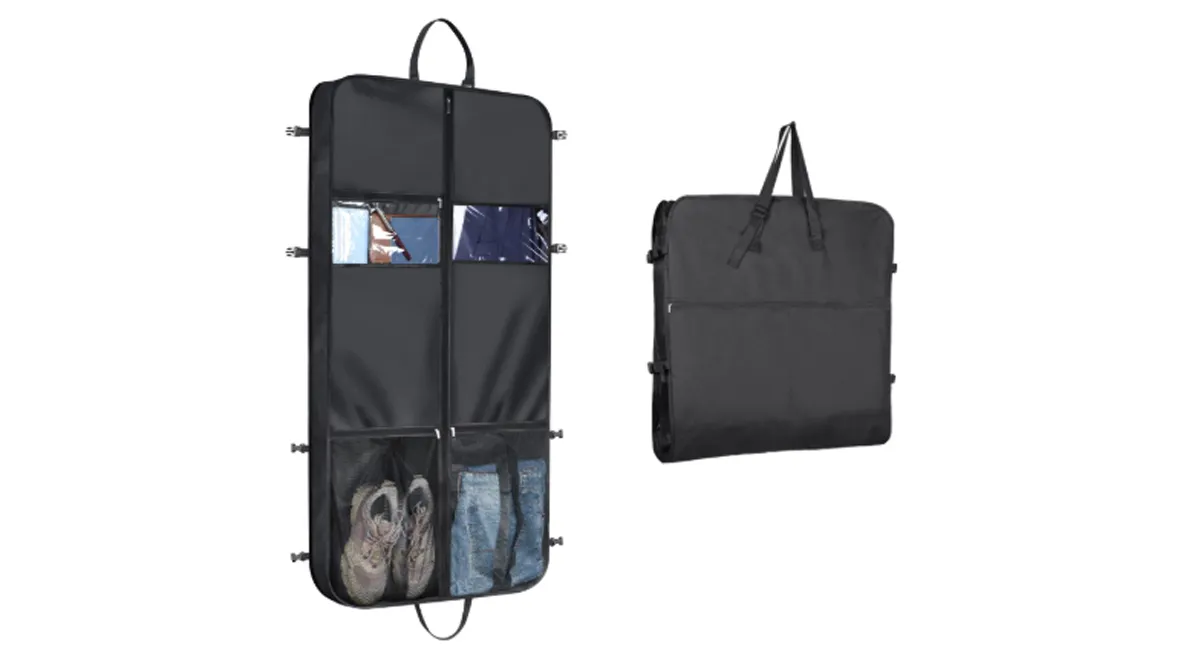Wondering how to clean canvas backpack without ruining it? You can do it at home and keep your bag looking fresh. Start by emptying everything out and brushing away crumbs or dirt. When you clean, use a gentle touch. Many people make mistakes like using bleach, scrubbing too hard, or tossing the bag in the washing machine. These can damage the fabric or stitching.

Common mistakes to avoid:
- Using harsh detergents or bleach
- Machine washing delicate parts
- Scrubbing too hard
- Ignoring stain types
- Skipping a spot test
Follow each step with care and your backpack will last longer and look great.
Key Takeaways
- Always take everything out of your backpack before cleaning. This helps you find hidden dirt and debris.
- Use gentle cleaning supplies like mild detergent, white vinegar, and baking soda. These will not hurt the fabric.
- Do not use harsh chemicals, bleach, or machine washing unless the care label says it is okay.
- Treat stains right away when you see them. This makes them easier to remove.
- Let your backpack air dry in a place with good airflow. This helps keep its shape and color.
- Clean your backpack every few months. This stops dirt from building up and keeps away bad smells.
- Waterproof your backpack to protect it from rain and spills. You can use spray-on repellents or wax treatments.
- Store your backpack the right way. Do not put it in damp places or fill it with heavy things. This helps keep its shape.
Supplies
Before you start cleaning your canvas backpack, you’ll want to gather the right supplies. Having everything ready makes the job easier and helps you avoid mistakes. Let’s break down what you need, what works best for stains, and what you should never use on your bag.
Essentials
You don’t need fancy products to clean your canvas backpack. Most of the best tools are simple and gentle. Here’s a handy list to get you started:
- Soft-bristled brush (like an old toothbrush): This helps you scrub away dirt without hurting the fabric.
- White cloth or sponge: Use this for wiping and blotting.
- Small basin or bucket: Perfect for mixing your cleaning solution.
- Mild detergent: Choose one that’s gentle and free of harsh chemicals.
- Drying rack or towel: Air drying keeps your backpack in good shape.
- Optional: Iron: If you want to smooth out wrinkles after drying.
- Eco-friendly cleaning products: Vinegar and baking soda work wonders and are safe for canvas.
- Protective spray: Keeps your backpack safe from water and stains after cleaning.
- Brass cleaner: Use this if your bag has metal hardware.
Tip: Always use lukewarm water. Hot water can shrink or damage canvas.
For Stains
Stains can be stubborn, but you have some powerful options that are still gentle on canvas. Here’s what works best:
- White distilled vinegar: Dab it directly on rust or tough stains. Let it soak for 15–30 minutes, then blot with a clean cloth.
- Baking soda paste: Mix baking soda with a little water. Spread it on the stain and gently scrub with a soft brush.
- Clean, white cloth or sponge: Always use white to avoid transferring color to your backpack.
- Cool, clean water: Rinse the area well after treating stains.
| Stain Type | What to Use | How to Apply |
|---|---|---|
| Rust | White vinegar | Soak, blot, rinse |
| General Dirt | Baking soda paste | Scrub gently, rinse |
| Spills | Mild detergent | Spot clean, rinse |
Note: You may need to repeat the process for stubborn stains. Always check a small spot first.
Avoid These
Some products and habits can ruin your canvas backpack. Keep your bag looking great by steering clear of these:
- Harsh chemicals: Bleach and strong cleaners can weaken the fabric.
- Overloading your bag: Too much weight strains seams and weak points.
- Direct contact with oily or greasy surfaces: These can leave stains that are hard to remove.
- Washing machine (without checking the care label): Some backpacks can’t handle machine washing and may fall apart.
Warning: Never use colored vinegar or rough brushes. These can stain or scratch your backpack.
With the right supplies, you’ll set yourself up for a smooth and safe cleaning process. Next, let’s get your backpack ready for a deep clean!
Preparation
Getting your canvas backpack ready for cleaning is just as important as the washing itself. If you skip these steps, you might miss hidden dirt or even damage your bag. Let’s walk through the best way to prep your backpack so you get great results every time.
Empty Backpack
Start by taking everything out of your backpack. Don’t forget the small pockets and hidden compartments. You might find old receipts, crumbs, or even a forgotten snack. Shake your bag upside down over a trash can to get rid of loose dirt. Use your hands to pull out the lining if your backpack has one. This helps you reach every corner.
Tip: Use a flashlight to check for tiny items stuck in seams or corners. You don’t want to wash your earbuds or coins by accident!
Check Label
Look for the care label inside your backpack. Most canvas bags have a tag with cleaning instructions. The label tells you if you can machine wash the bag or if you should stick to hand washing. If the label says “spot clean only,” don’t put your backpack in the washer. Some labels show water temperature or recommend certain detergents. Always follow these instructions to keep your backpack safe.
| Label Says | What You Should Do |
|---|---|
| Machine Wash | Use gentle cycle, cold water |
| Hand Wash Only | Clean with mild soap and water |
| Spot Clean Only | Treat stains, avoid soaking |
| No Label | Test a hidden spot first |
Pre-treat Stains
Before you wash the whole backpack, check for stains. You might see ink marks, food spills, or mud. Treating stains early makes cleaning easier and helps your bag look new.
Spot Clean
Mix a small amount of mild soap with warm water. Dip a soft cloth or sponge into the solution. Dab the stained area gently. Don’t scrub hard—canvas can fray if you use too much force. Use circular motions to lift the stain. Wipe away soap with a clean, damp cloth.
Note: Always test your cleaning solution on a hidden part of the backpack first. This way, you can make sure the color doesn’t fade or bleed.
Stain Remover
For tough stains, you can use a gentle stain remover. Choose one made for fabric, not for carpets or hard surfaces. Put a little on the stain and let it sit for a few minutes. Blot with a clean cloth. If you see rust or ink, try using white vinegar or a baking soda paste. These natural cleaners work well and won’t harm the canvas.
If the stain doesn’t come out right away, repeat the process. Patience pays off! Once you’ve treated all the stains, you’re ready to move on to washing.
How to Clean Canvas Backpack: Steps

Ready to dive into the cleaning process? You’ll find that learning how to clean canvas backpack is easier than you might think. Let’s break down both hand washing and machine washing so you can choose the best method for your bag.
Hand Wash
Hand washing gives you the most control and helps protect your backpack from damage. Follow these steps for a safe and thorough clean:
Make Solution
- Fill a small basin or bucket with lukewarm water.
- Add a few drops of mild detergent or gentle soap.
- Mix until you see light suds.
- If you want a natural option, use a vinegar-water solution or baking soda paste for stains.
Tip: Always use lukewarm water. Hot water can shrink canvas and fade colors.
Scrub Gently
- Empty all pockets and shake out loose debris.
- Use a soft-bristled brush or sponge to sweep away dirt.
- Focus on stained areas. Dab with your cleaning solution, but avoid scrubbing too hard.
- Protect any leather accents by keeping them dry.
- For stubborn stains, apply a gentle soap solution and let it sit for a few minutes.
You don’t need to scrub every inch. Work in small circles and check your progress as you go.
Rinse
- Wipe away soap with a clean, damp cloth.
- Rinse the backpack with fresh lukewarm water.
- Make sure no soap remains, especially around seams and zippers.
- Gently squeeze out excess water, but don’t twist or wring the fabric.
Let your backpack air dry in a well-ventilated area. Keep it away from direct sunlight to prevent fading.
Hand washing is the safest way if you want to know how to clean canvas backpack without risking damage. You’ll keep the shape and color looking fresh.
Machine Wash
Some canvas backpacks can handle machine washing, but you need to check the care label first. If your bag says “machine washable,” follow these steps for best results.
When Safe
- Machine washing works for sturdy canvas backpacks without delicate parts or embellishments.
- Always check the care label before you start.
- Hand washing is safer for backpacks with special coatings or decorations.
Prep Backpack
- Empty all pockets and shake out debris.
- Brush off dirt with a soft brush or whisk broom.
- Place the backpack inside a pillowcase or laundry bag to protect straps and zippers.
- Remove any detachable parts.
Never overload the washing machine. Wash your backpack alone or with a few towels for balance.
Settings
- Use a gentle cycle with cold or lukewarm water.
- Add a small amount of mild detergent, like Ivory dish soap.
- Avoid bleach or harsh chemicals.
- Skip the spin cycle if possible to prevent shrinking.
- After washing, hang the backpack to dry outside or in a well-ventilated room. Attach it to its frame if it has one.
Machine washing can be effective, but some backpacks may lose their shape or get damaged. If you’re unsure, stick to hand washing.
Learning how to clean canvas backpack by hand or machine helps you keep your bag looking new. Choose the method that fits your backpack’s needs and always follow the care label. With these steps, you’ll get a clean, fresh backpack every time.
Drying
After you finish washing your canvas backpack, drying it the right way makes a big difference. If you rush this step or use the wrong method, you might end up with a bag that looks worn out or loses its shape. Let’s walk through the best ways to dry your backpack and keep it looking great.
Air Dry
Air drying is the safest and most effective way to dry your canvas backpack. You don’t need any fancy equipment. Just find a spot with good airflow. Hang your backpack on a sturdy hanger or lay it flat on a clean towel. Open all the zippers and pockets so air can move inside and out. This helps the bag dry faster and prevents any musty smells.
Tip: Flip your backpack over after a few hours. This lets both sides dry evenly and keeps moisture from getting trapped.
If you want to speed things up, place your backpack near a fan or an open window. Avoid putting it too close to a heater. High heat can damage the fabric and cause it to shrink.
Shape Backpack
While your backpack dries, you want it to keep its shape. A floppy or wrinkled bag never looks good. Here’s what you can do:
- Stuff the main compartment with clean, dry towels or crumpled paper. This helps the backpack hold its form as it dries.
- Smooth out any wrinkles or folds with your hands.
- Adjust the straps and handles so they dry in the right position.
If your backpack has a frame, reattach it before drying. This helps the bag keep its structure. Don’t forget to check on your backpack every few hours. You can reshape it if you see any sagging or odd bumps.
What to Avoid
Some drying methods can ruin your canvas backpack. You want your bag to last, so steer clear of these common mistakes:
- Using a Dryer: High heat can warp fabrics, melt zippers, and weaken straps.
- Direct Sunlight: Prolonged exposure can fade colors and weaken fabric fibers.
| Drying Method | Risk to Backpack |
|---|---|
| Dryer | Warps fabric, melts zippers, weakens straps |
| Direct Sunlight | Fades color, weakens fabric fibers |
Note: Always let your backpack dry naturally. Patience pays off. You’ll end up with a backpack that looks and feels fresh, without any damage.
If you avoid these mistakes, your canvas backpack will stay strong and colorful for years. Take your time with drying, and your bag will thank you!
Stains & Odors
Natural Fixes
Stains can show up on your canvas backpack when you least expect them. You do not need harsh chemicals to get rid of most marks. You can use simple ingredients from your kitchen. These natural fixes work well and keep your backpack safe.
Here is a quick guide to some of the best natural stain removers:
| Ingredient | Method |
|---|---|
| Vinegar | Mix equal parts water and white vinegar. Spray or dab the mix on the stain. Let it sit for a few minutes, then blot with a clean cloth. |
| Cornstarch | Sprinkle cornstarch over grease stains. Let it sit for 10–15 minutes to soak up the oil. Brush it off before washing. |
| Dish Soap | Put a drop of mild dish soap on the stain. Gently rub it in with your finger or a soft brush. Rinse with water. |
You can repeat these steps if the stain does not come out the first time. Always test any cleaner on a hidden spot before using it on the whole bag. This helps you avoid color fading or damage.
Tip: Work on stains as soon as you notice them. Fresh stains are much easier to remove than old ones.
Deodorize
Sometimes your backpack smells musty after a long day or a rainy walk. You can freshen it up with a few easy tricks. You do not need fancy sprays or perfumes.
- Mix water and white vinegar in a spray bottle. Lightly mist the inside of your backpack. Let it air dry with all pockets open.
- Place an open box of baking soda inside the bag overnight. Baking soda absorbs odors and leaves your backpack smelling clean.
- Put a few dryer sheets or a small sachet of dried lavender in the main compartment. These add a gentle, pleasant scent.
Note: Always let your backpack dry completely before you use it again. Dampness can cause new odors or even mold.
Professional Help
Some stains and smells just will not go away, no matter what you try at home. In these cases, you might want to call in the pros. Professional cleaning services have special tools and cleaners that can handle tough problems.
You should consider professional help if:
- You have stains that will not budge after several tries.
- Your backpack has mold or mildew.
- Water damage is severe and needs expert care.
- Odors linger even after deodorizing at home.
- Your backpack has delicate patches, embroidery, or decorations that need special attention.
A professional cleaner can save your backpack and keep it looking its best. Sometimes, it is the safest choice for tricky stains or valuable bags.
Maintenance
Clean Regularly
You want your canvas backpack to look great and last a long time. Regular cleaning is the secret. When you clean your backpack every few months, you keep it fresh and vibrant. You also stop bacteria, mold, and allergens from building up. This simple habit can make your backpack last for years.
Here’s why regular cleaning matters:
- Your backpack stays bright and clean.
- You avoid germs and musty smells.
- The fabric and stitching stay strong.
You do not need to wash your backpack every week. Just check for dirt or stains. If you see any, spot clean them right away. For a full clean, every few months works well. Always pay extra attention to leather accents. Gentle care keeps them looking sharp.
Tip: A quick brush or wipe-down after each use helps prevent dirt from settling in.
Prevent Stains
Stains can sneak up on you, but you can stop most of them before they start. The best way is to create a barrier between your backpack and the mess.
- Spray a water and stain repellent on your backpack. This invisible shield blocks spills and dirt.
- Rub beeswax or a special fabric wax on the canvas. This makes your bag more water-resistant. Wax may darken the fabric a bit, so test a small spot first.
- Use a soft-bristled brush or an old toothbrush to dust off dirt and crumbs. Do this often to keep your backpack looking new.
- Clean up spills right away with mild detergent or dish soap. A gentle touch protects the fabric.
- For tough spots, try white vinegar or baking soda. These natural cleaners work well and are safe for canvas.
Note: Regular freshening keeps stains from becoming permanent. Quick action is your best defense.
Store Right
How you store your canvas backpack matters just as much as how you clean it. Good storage keeps your bag in shape and ready for your next adventure.
- Never overload your backpack. Too much weight can stretch seams and change its shape.
- Store your backpack in a cool, dry place. Avoid damp basements or hot attics.
- Do not fold your backpack in ways that cause deep creases. Lay it flat or hang it up if you can.
- Make sure your backpack is completely dry before you put it away. Dampness can lead to mold or bad smells.
Tip: Stuff your backpack with clean towels or paper when storing it. This helps it keep its shape.
With these simple habits, you protect your canvas backpack from wear and tear. Regular care means your bag will always look good and be ready for anything.
Waterproof
You want your canvas backpack to handle rain, spills, and outdoor adventures. Waterproofing helps you protect your bag from water damage and stains. Canvas is tough, but it can soak up moisture if you leave it untreated. You can make your backpack water-resistant with a few easy steps.
Why Waterproofing Matters
Water can ruin your backpack’s shape and color. Wet canvas takes a long time to dry. Mold and mildew can grow if you store your bag while it’s damp. Waterproofing keeps your backpack looking fresh and helps it last longer.
Tip: Waterproofing does not make your backpack completely waterproof. It helps repel water and makes cleaning easier.
How to Waterproof Your Canvas Backpack
You have several options for waterproofing. Some methods work better for heavy rain, while others are great for everyday use. Here are the most popular ways:
- Spray-On Water Repellent
- Buy a spray made for canvas or outdoor gear. Look for products that say “waterproof” or “water-repellent.”
- Clean your backpack first. Dirt and stains can block the spray.
- Hold the spray bottle about six inches from the fabric. Spray evenly over the whole backpack.
- Let the backpack dry for a few hours. Check the label for drying time.
- Repeat every few months or after washing.
- Wax Treatment
- Use canvas wax or beeswax. Wax creates a strong barrier against water.
- Warm the wax in your hands or with a hair dryer. Rub it onto the canvas in small sections.
- Use a clean cloth to spread the wax evenly.
- Heat the waxed area with a hair dryer. This helps the wax soak into the fabric.
- Let the backpack cool and dry before you use it.
| Method | Pros | Cons |
|---|---|---|
| Spray-On | Quick, easy, no mess | Needs reapplying often |
| Wax Treatment | Strong protection | Can darken fabric, takes time |
Extra Waterproofing Tips
- Always test waterproofing products on a hidden spot first. Some sprays or waxes can change the color of your backpack.
- Reapply waterproofing after each wash. Cleaning can remove the protective layer.
- Pay extra attention to seams and zippers. Water can sneak in through these spots.
- Store your backpack in a dry place. Waterproofing helps, but damp storage can still cause problems.
Note: If your backpack has leather or metal parts, cover them before you spray or wax. Some products can damage these materials.
Waterproofing is easy and makes a big difference. You can enjoy your canvas backpack in any weather. Regular care keeps your bag ready for school, travel, or outdoor fun. Try these tips and see how much longer your backpack lasts!
Conclusion
You have learned how to clean canvas backpack in easy ways. These steps help your bag look nice and last longer. Cleaning often and being gentle keeps your backpack fresh. Experts say mild soaps and natural cleaners are best. They protect the fabric and stop bad smells. For businesses looking for customized solutions, we offer high-quality custom canvas backpacks tailored to your specific needs.
Our custom canvas backpacks include:
- Personalized Design: We work with your team to design backpacks with your company logo, colors, and branding.
- Durable Materials: We use premium, eco-friendly canvas that is built to last, ensuring your backpacks withstand wear and tear.
- Flexible Quantities: Whether you need a small batch or large volume, we can accommodate your order size and deliver on time.
- Custom Features: Choose from additional features like extra compartments, padding, adjustable straps, and more to meet your operational requirements.
- Cost-effective Bulk Orders: By purchasing directly from the manufacturer, you benefit from competitive pricing, quality control, and dedicated support for large orders.
If you’re looking for a reliable partner to provide high-quality, customized canvas backpacks for your business, contact us today. We’ll work with you to create the perfect product for your needs.
FAQ
How often should you clean your canvas backpack?
You should clean your backpack every few months or when it looks dirty. Spot clean stains as soon as you see them. Regular care keeps your bag fresh and helps it last longer.
Can you put a canvas backpack in the washing machine?
Check the care label first. If it says “machine washable,” use a gentle cycle and cold water. Always place your backpack in a laundry bag or pillowcase. Hand washing is safer for most canvas bags.
What should you do if your backpack smells bad?
Try sprinkling baking soda inside your backpack and let it sit overnight. You can also mist the inside with a mix of water and vinegar. Let it air out with all pockets open.
Will cleaning make the colors fade?
Using mild soap and lukewarm water helps protect the colors. Avoid bleach and direct sunlight when drying. Always test cleaners on a hidden spot first.
How do you remove ink stains from canvas?
Dab the stain with rubbing alcohol or white vinegar using a clean cloth. Blot gently and repeat if needed. Avoid scrubbing hard, or you might damage the fabric.
Can you waterproof your canvas backpack at home?
Yes! Use a spray-on water repellent made for fabric or rub on canvas wax. Always test on a small area first. Reapply after each wash for best results.
What should you avoid when cleaning canvas backpacks?
- Never use bleach, harsh chemicals, or hot water.
- Don’t put your backpack in the dryer.
- Avoid scrubbing too hard or soaking leather parts.



